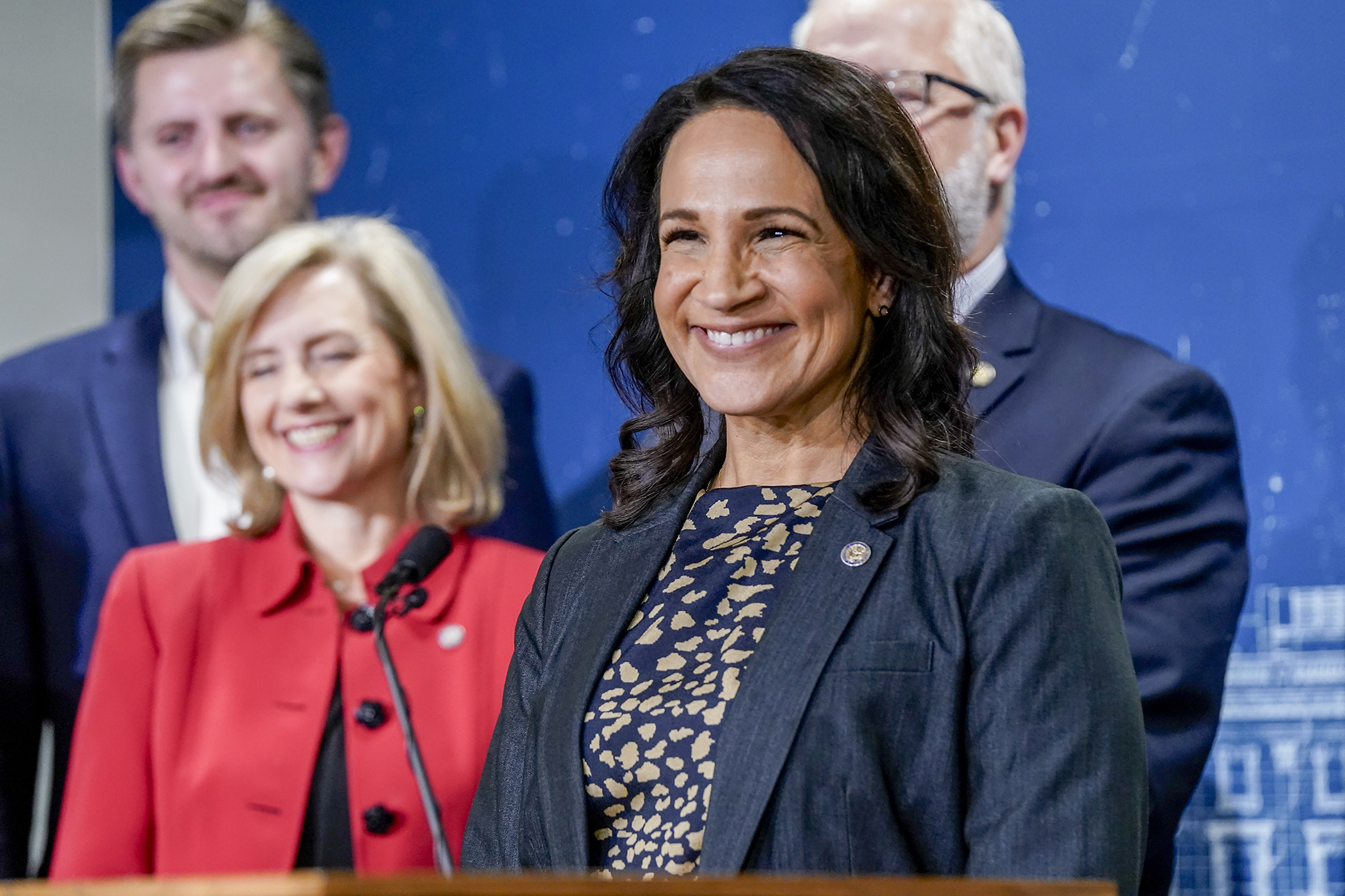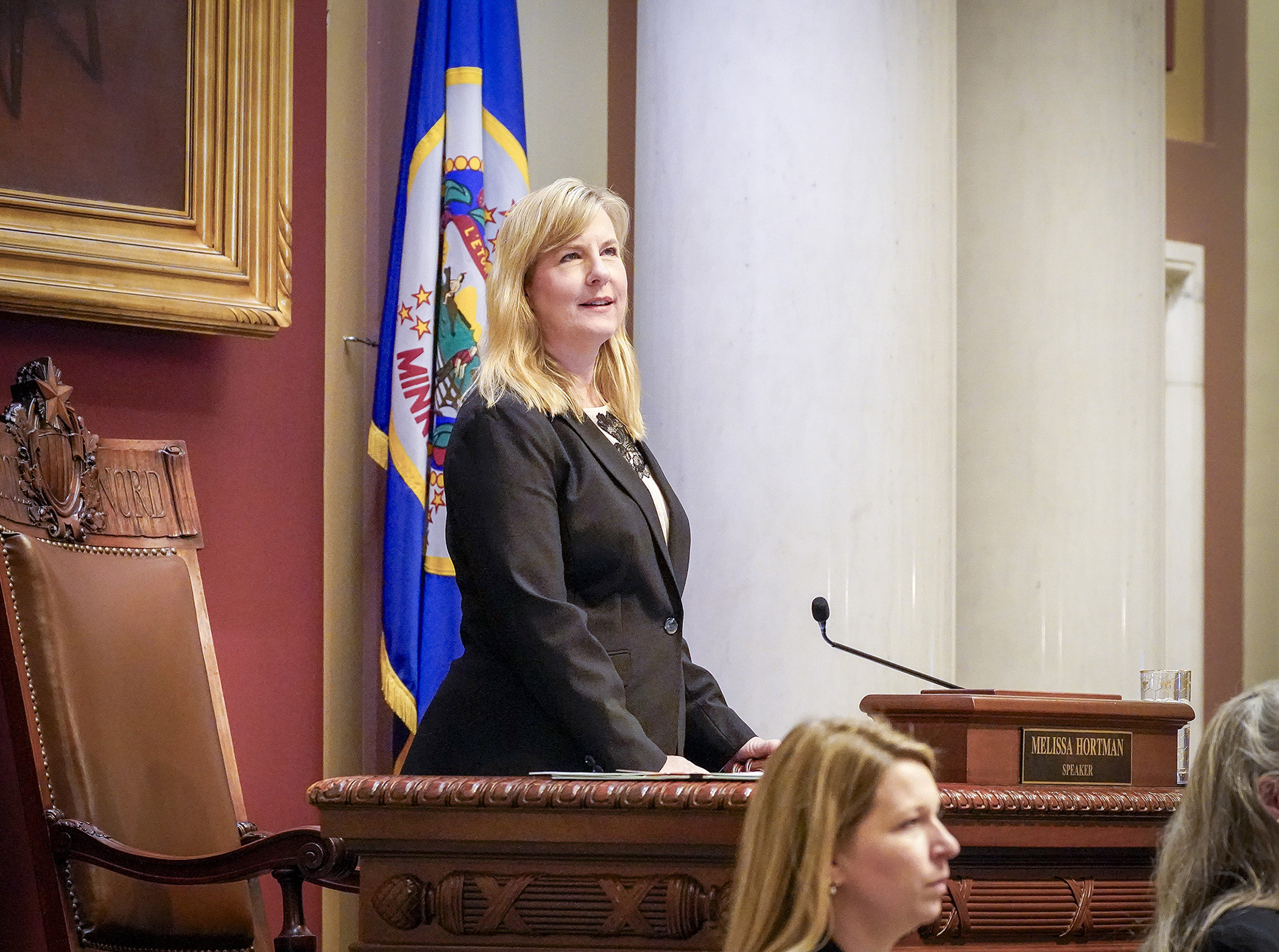Cannabis bills are a case study on amending state constitution

Through Tuesday, 22 amendments to the Minnesota constitution have been proposed in 2019. That’s almost .08 percent of the 2,870 House bills introduced.
A slightly larger number is three: That is the number of times over the last two decades voters have approved proposals to amend the Minnesota Constitution.
The rareness of constitutional amendments is a good thing, say constitutional scholars. They also say that it’s an appropriate way to create new law — but only under the right circumstances.
Just exactly what those circumstances are, of course, is subject to debate. And it’s one that may yet come up again this session, because there is a bill and two constitutional amendments proposed to legalize cannabis for recreational use.
“In my mind, constitutional amendments are appropriate for laws that set out the structure of government or the limitations on governmental authority, or that set out basic civil rights,” said Rep. Mike Freiberg (DFL-Golden Valley), who sponsors HF420 to legalize recreational use of cannabis by adding new statutory language.
Rep. Raymond Dehn (DFL-Mpls) and Rep. Tina Liebling (DFL-Rochester) sponsor HF265 and HF465, respectively, to legalize recreational cannabis through a constitutional amendment.
“Minnesotans should have the opportunity to decide whether to legalize personal use of cannabis under a careful system of regulation and taxation,” Liebling said.
Dehn says one reason he chose the constitutional amendment route is it would provide more assurance that cannabis legalization is set in place for the long term.
“With a constitutional amendment, the people pass it; the only way to change it is through another constitutional amendment,” he said.
Freiberg views the permanency of a constitutional amendment as a drawback.
For example, the Dehn and Liebling bills specify that individuals would be allowed to grow or possess no more than 12 mature cannabis plants. His legislation specifies six.
Freiberg says that could lead to a bad situation, if, for example, it turns out that allowing individuals to have 12 mature plants is unwise. Modifying that number then becomes very time-consuming and problematic. His bill would allow legislators to more easily make modifications as time passes and the ramifications of legalizing recreational cannabis become known.
However, Liebling’s and Dehn’s bills would direct the Legislature to “prescribe by law a manner to license and regulate the cultivation, manufacturing, harvesting, processing, packaging, transporting, displaying, possessing, and selling of cannabis and cannabis-infused products for commercial purposes.”
A little bit of history
Minnesota lawmakers have passed legislation to put proposed amendments on a ballot 216 times – 121 were approved by voters.
Proposals to amend the state constitution came while the ink on the document had barely time to dry.
In 1858, the same year Minnesota was admitted to the union, two proposed amendments on that year’s ballot passed easily, but one has to wonder about the 6,733 voters (out of 31,756 total) who voted against the amendment proposing to … establish a state government.
The peak decade for proposed constitutional amendments was the 1910s, when 32 made it onto ballots. Constitutional amendment proposals have been significantly less frequent in the modern era, particularly during the last two decades, with just five proposed since 1998.
Too many questions!
The most proposed amendments put to a public vote was 11 in 1914. All but one failed, thus perfectly illustrating the phenomenon of “voter fatigue,” where more voters fail to vote on an amendment question as the number of such questions on the ballot increases.
As pointed out in a 2013 report by the nonpartisan House Research Department, under Minnesota election rules, a failure to vote on an amendment question counts as a “no” vote.
However, that rule was not in the constitution originally ratified in 1858. The amendment was added 40 years later when 27 percent of voters in the 1898 general election voted “yes” on the proposal. Thirteen percent voted “no” and 60 percent didn’t vote on the question at all. Thus, it was ratified under the simple majority standard used at the time.
Strategy, strategy, strategy
Under what circumstances might legislators opt for proposing a constitutional amendment rather than using the usual legislative process?
The answer, more often than not, has to do with the fact that a bill proposing a constitutional amendment is veto-proof.
This was the case in the 2011-12 biennium, when Republicans controlled both houses of the Legislature, but DFL Gov. Mark Dayton stated he would not sign Republican-backed bills to ban same-sex marriage and require voter identification to cast a ballot. With House and Senate approval, both questions were before voters in the 2012 general election.
Both were defeated and the DFL regained control of the House and Senate.
The situation that year also illustrates another tactic sometimes used by both sides of the aisle, which is to use constitutional amendment questions as a “get out the vote” strategy they hope will get more of their party’s voters to the polls, thus also getting more votes for that party’s candidates.
The amendment process, in detail
Whatever political balance is in place, or whatever strategy lawmakers may be pursuing, the process for proposing to amend the Minnesota Constitution begins with the introduction of a bill — including the exact ballot language of the question proposed — in either the House or Senate.
Currently, the Minnesota Constitution has 14 articles and 137 sections. Theoretically, an amendment could add a new article to the constitution if it addresses a completely new topic of law, but it’s more likely that such language would be added to Article 13 – Miscellaneous Subjects.
The legislative route mostly follows the same path as all other bills: introduction, committee approval and passage by the House and Senate.
Instead of going to the governor for action, the proposed constitutional amendment goes to the secretary of state who prepares a short title to identify the question to be placed on the ballot on the next statewide even-year election.
The nonpartisan House Research Department estimates that historically, it has taken roughly a 60 percent “Yes” vote to pass a constitutional amendment.
Legislative outlook and political realities
Although Gov. Tim Walz has said he supports legalizing recreational cannabis, Senate Majority Leader Paul Gazelka (R-Nisswa) has said his caucus is strongly opposed and that no cannabis bills will pass that body.
Committee deadlines have passed with no bills proposing to legalize recreational cannabis receiving House hearings. Legislators instead seem to be taking a slower, more measured approach, with HF717, sponsored by Rep. Carlos Mariani (DFL-St. Paul), proposing to create a cannabis task force “to advise the legislature on the legalization, taxation, and regulation of cannabis production, sale, and use by those 21 years of age or older in the state.”
That provision is in HF2792, the omnibus public safety and criminal justice reform finance bill, which Mariani sponsors.
Related Articles
Search Session Daily
Advanced Search OptionsPriority Dailies
Demuth named Republican speaker-designate
By HPIS Staff Current House Minority Leader Lisa Demuth (R-Cold Spring) is officially the Republican speaker-designate charged with working with DFL counterparts to get the House organized fo...
Current House Minority Leader Lisa Demuth (R-Cold Spring) is officially the Republican speaker-designate charged with working with DFL counterparts to get the House organized fo...
House DFL selects Hortman as speaker-designate
By Jonathan Mohr House DFLers have again chosen current House Speaker Melissa Hortman (DFL-Brooklyn Park) to lead their caucus amid uncertainty in the aftermath of Tuesday’s election that may ha...
House DFLers have again chosen current House Speaker Melissa Hortman (DFL-Brooklyn Park) to lead their caucus amid uncertainty in the aftermath of Tuesday’s election that may ha...